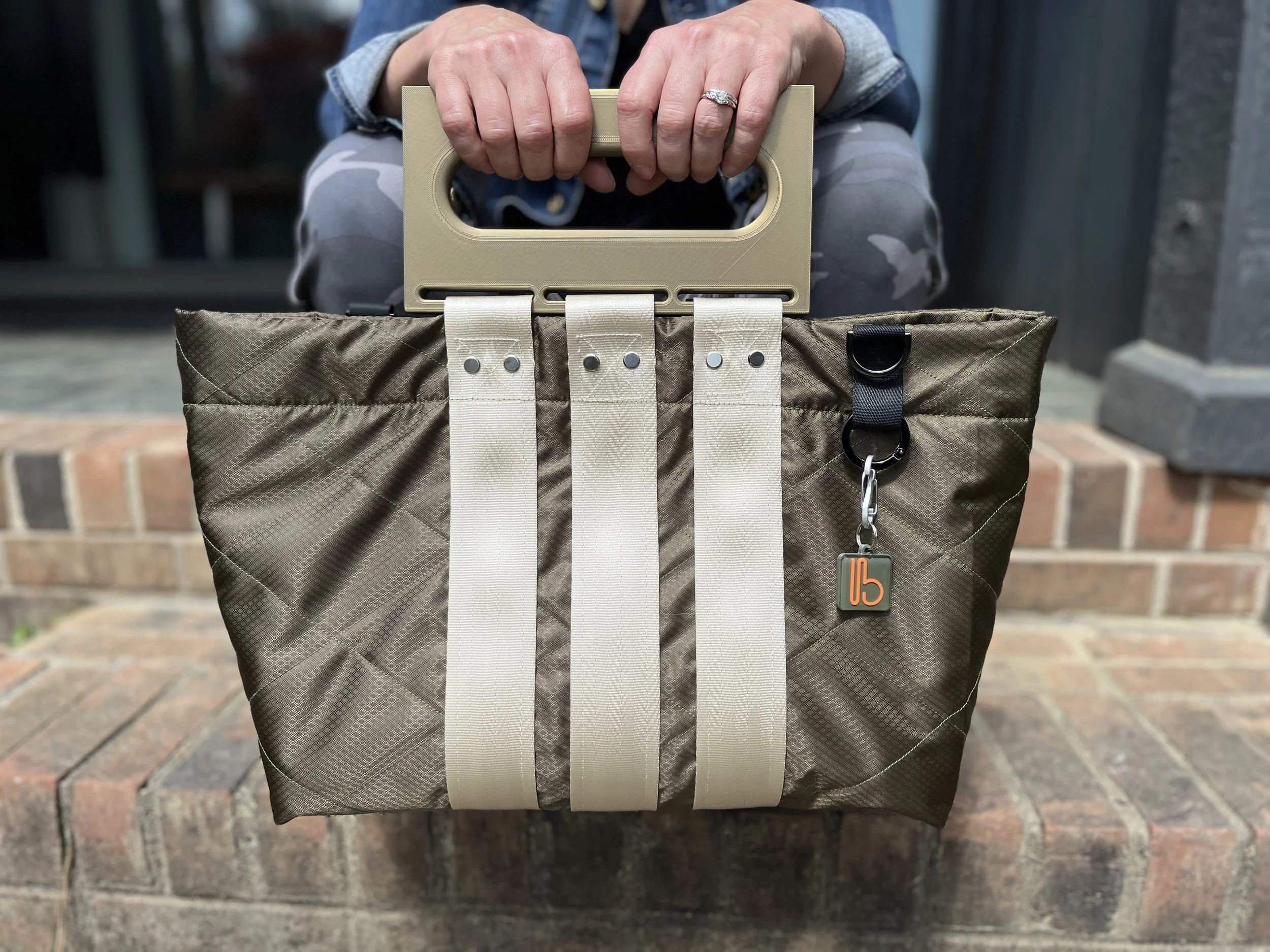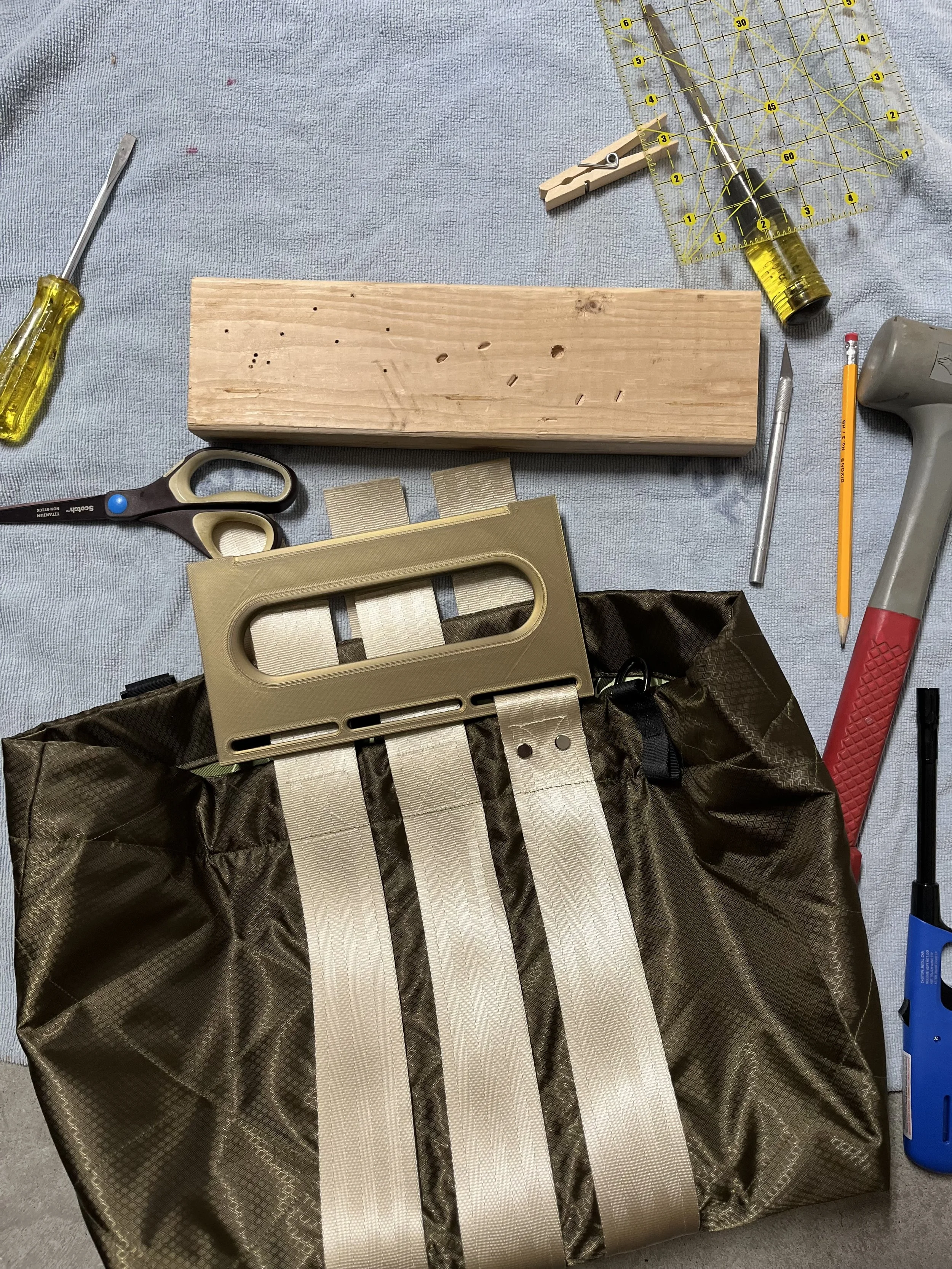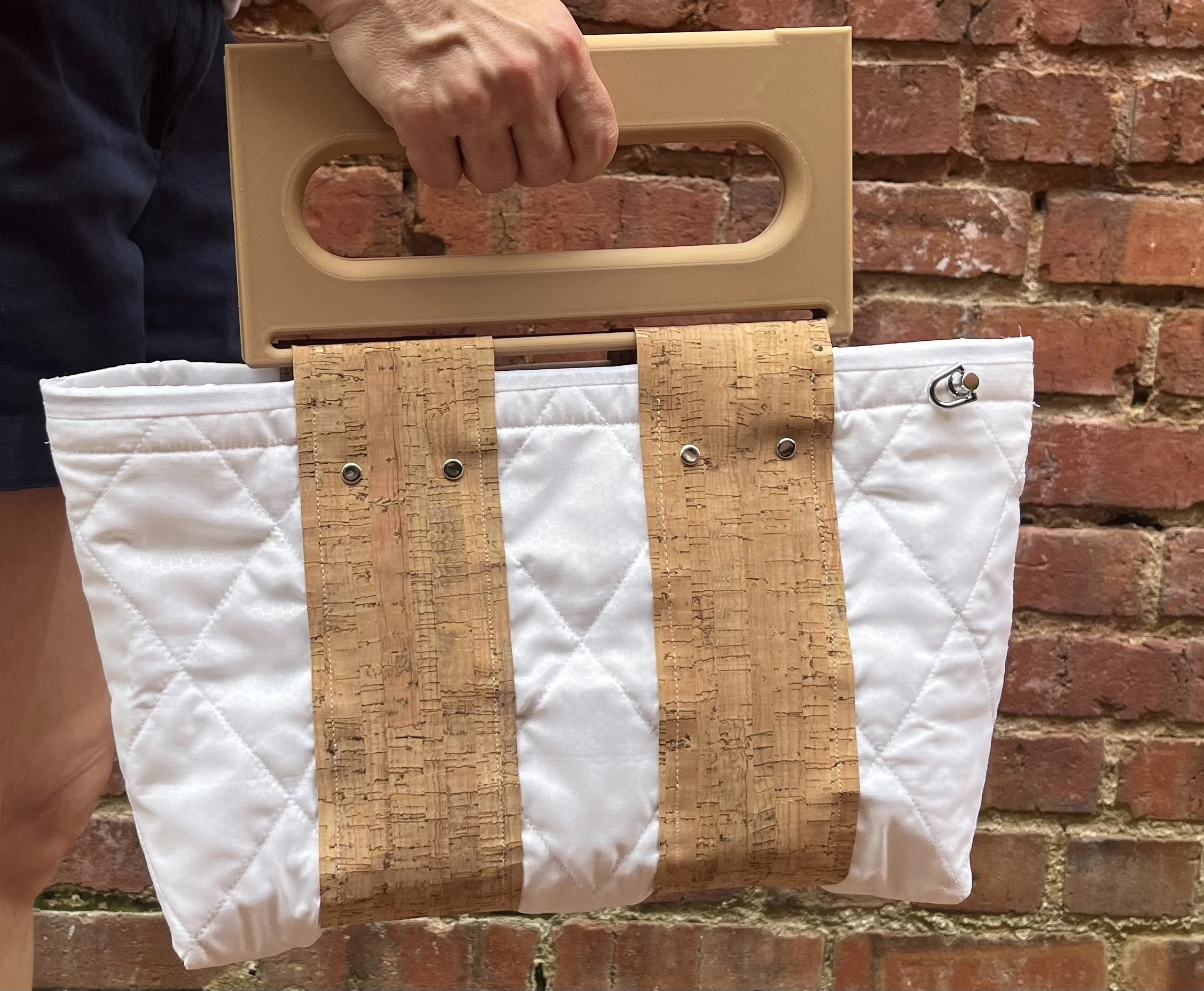Two variations of straps & rivets
Next stop on our purse handle journey -
As you may have read in our last journal entry , we designed and test-printed a few different styles using a few different filament materials in our first round of 3D printed prototypes. We learned a lot from working through the construction of the first purse, and now it was time to try some new things with those other handles.
A few of those test sets were rectangular and had fairly slim openings intended for the attachment material to pass through. Their futuristic design seemed to pair well with the popular nylon quilted tote bag style. We started exploring a few ways to attach these handles to our handbags and landed on some materials that were new to us in the sewing room.
Using Seat Belt Webbing and Rivets
Taking a cue from the many quilted bags out there today with canvas straps, we decided to incorporate some cream seatbelt material into the design as a way to attach the handles.
It not only goes well with the olive green ripstop, but it also gives the bag some rigidity and strength.
Got some good learnings working with seat belt webbing for this project: Surprisingly, the seat belt strap wasn’t as hard to sew through with the bag layers as we anticipated. We kept the machine at a stitch length of 3.
Now, because we wanted to use this webbing it made the most sense to use rivets to lock the straps in. First we had to make the holes - through the layers of seat belt webbing, 2 layers of ripstop and a layer of batting. After researching how to do this we landed on a recommendation to use a ¼” wood chisel and a hammer, which made a nice clean hole.
We read that seat belt material has a tendency to fray if it is not cauterized, which we noticed as we tried to insert the rivets through the holes we made. Usually you can use some heat on the webbing to keep it from fraying, but this is difficult to do on the holes, especially when it is already attached to the bag. We did our best, but we may do some more research and see if there are other options out there to make a clean hole that reduces fraying.
Last thing to do was put the rivets in. To be honest, we used some screw rivets on this handbag because we had these on hand and thought the webbing would be rigid enough. After struggling to get these through the seat belt webbing and all the layers we will definitely be trying regular cap rivets next time.
Using Cork, Pockets, and Rivets
For this second handbag iteration, we continued with the same style tote bag, but used a lightweight cork to attach the handles. On the outside, we created two 3 inch straps of cork, which wrap around the entire purse. To finish attaching the handles we created 2 pockets out of the same cork material, which we sewed to the straps and slid through the slim openings of the handles. Using double-cap rivets, we locked the pockets into the sides of the purse, permanently locking in the purse handles.
In case you are wondering, sewing with cork is just like sewing with any other material. The one thing we found (mentioned in our research too) is that the cork may not slide across your sewing machine foot easily. We found that if you actively feed the material through as you sew it won’t get stuck. It is also recommended that you should keep your stitch length at 3 - 3.5 because anything smaller may cause the cork to break and tear, like a perforated edge.
Working with the double-cap rivets was the best bet for this bag. We were able to make the holes needed with a rotary hole punch, snapping through both cork and quilted material. We were able to easily snap the two rivet sides together and use a hammer and rivet setter to lock them.
Conclusions
Both options for attaching these custom handbag handles worked great and can be applied with basic tools. For reference, these projects were sewn with a Singer 100/16 needle for heavy duty woven fabric and a basic Kenmore sewing machine. (Nothing fancy here)
To summarize our learnings from these projects:
A ¼” wood chisel & hammer can be used to make a hole through seat belt webbing, but consider using a wood block on a hard surface so you don’t mark up your table.
Use heat to cauterize the raw edges of your seat belt material to keep it from fraying.
When sewing with cork, actively feed it through your machine so it doesn’t get stuck.
Use a 3 - 3.5 stitch length, especially on cork so it doesn’t perforate.
Hopefully this inspires you to be bold in your next project, explore materials that are new to you, and let your imagination soar.
Want to see how we finished attaching the handles to the white quilted purse with the cork pockets? You can check out our YouTube Short to see it in action.











